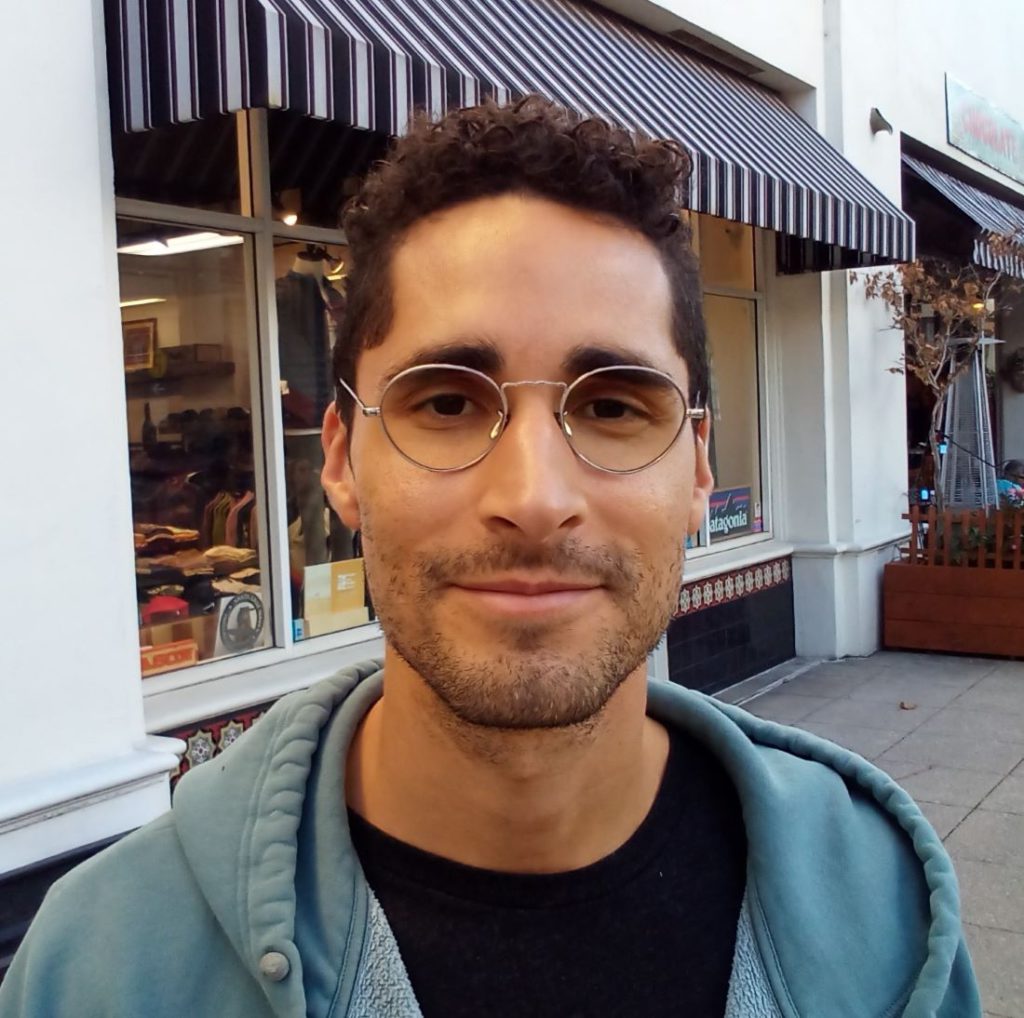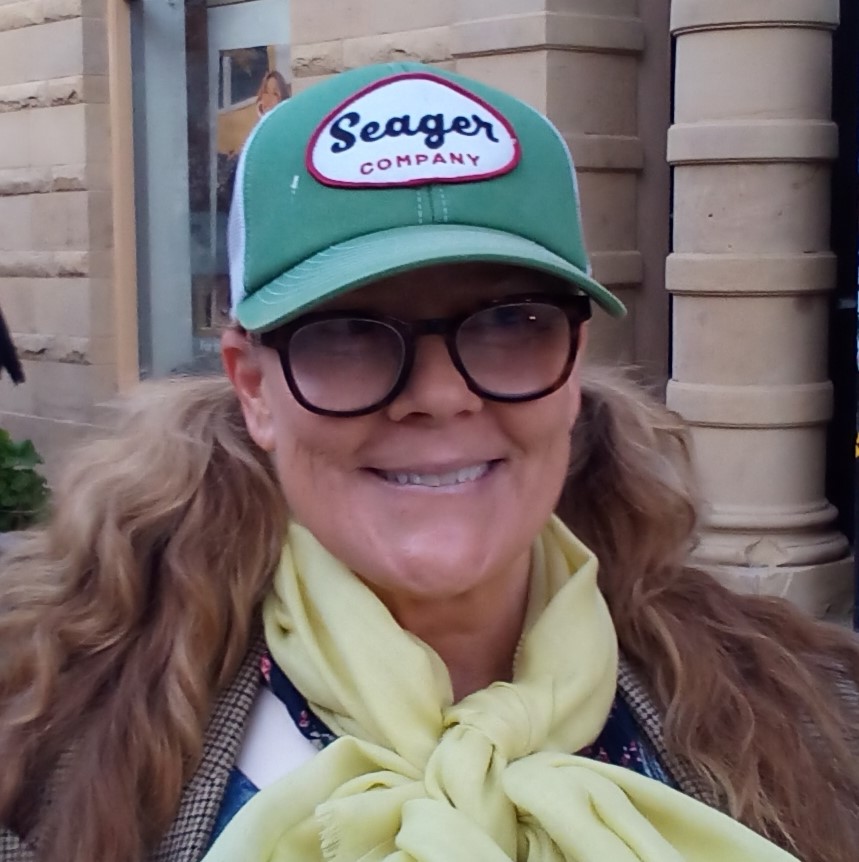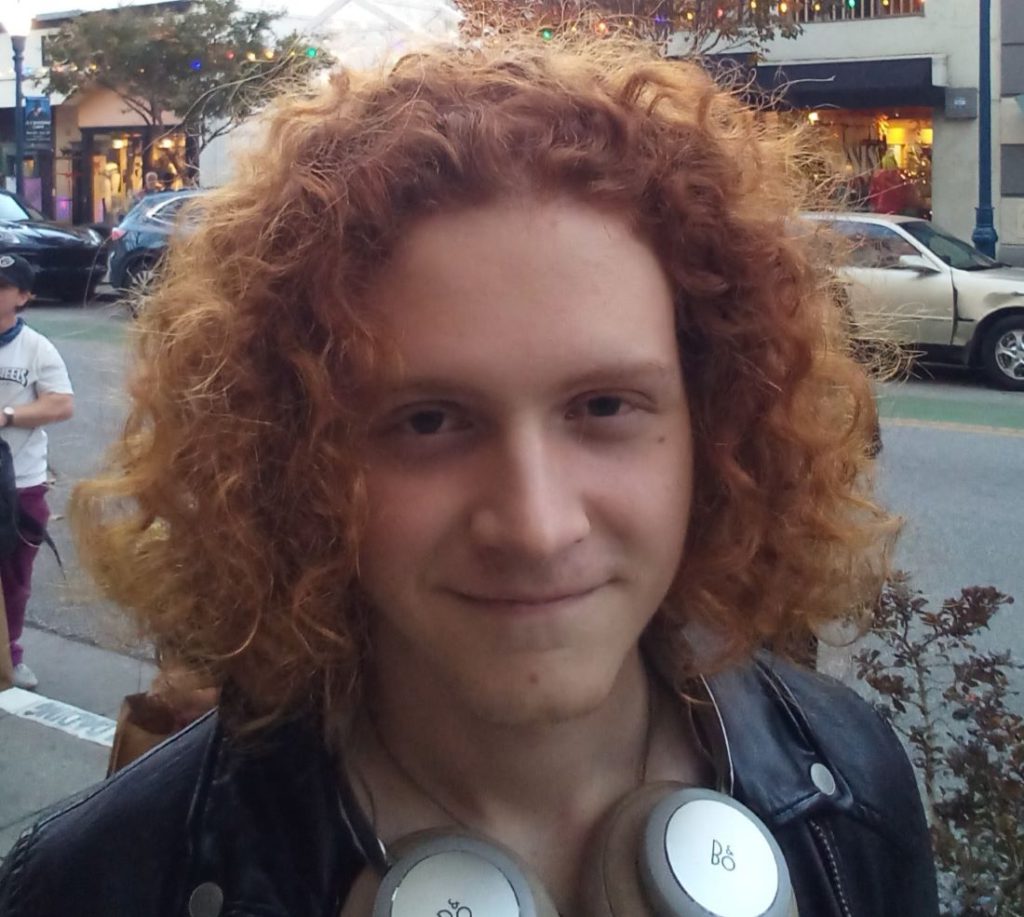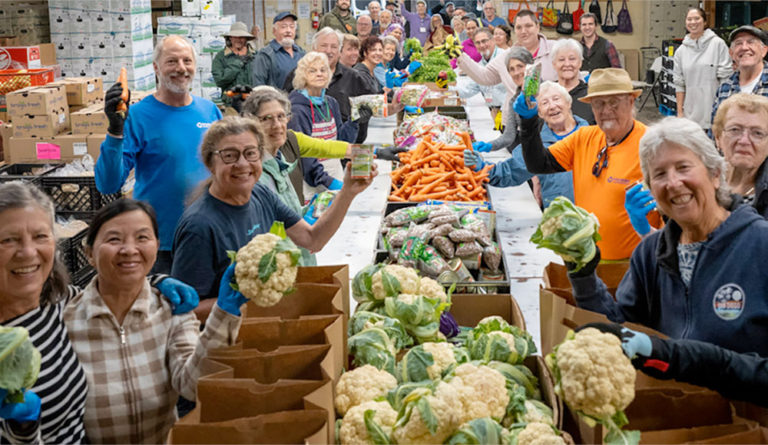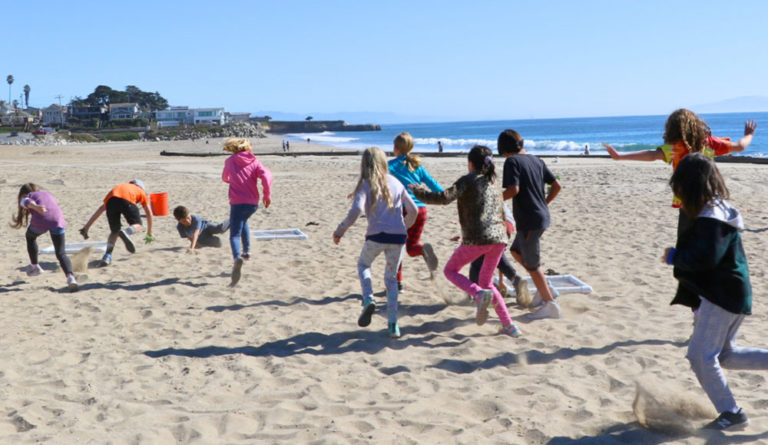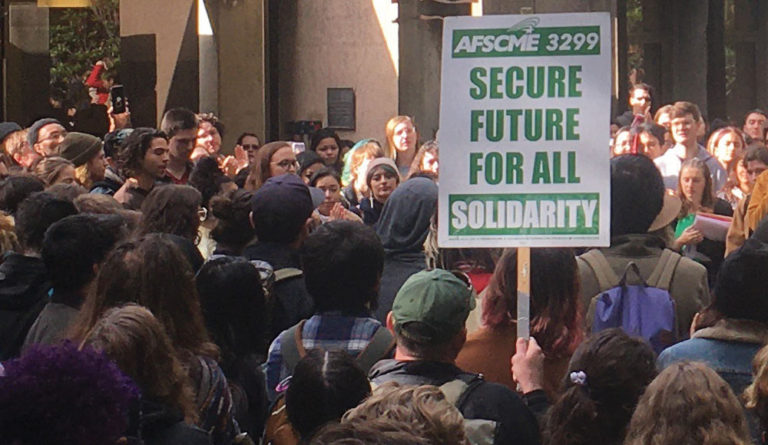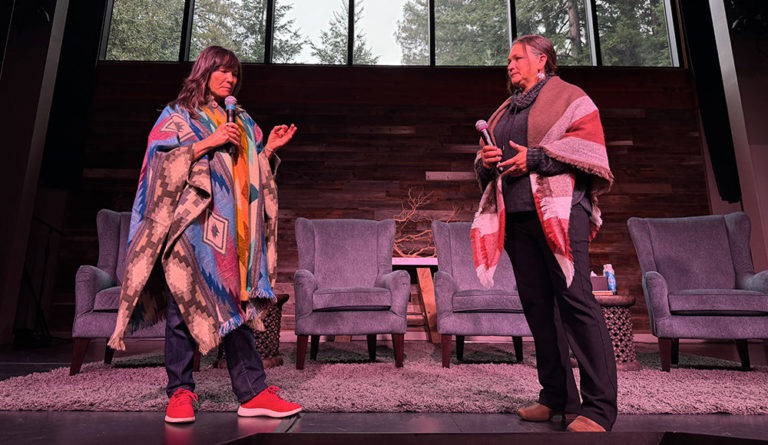Strangers helping strangers may seem like a curious business model. But it’s worked for Grey Bears for 50 years. The company’s credo is “seniors helping seniors.”
Sprouting from a harvest festival in 1973 put on by UCSC graduates Kristina Mailliard and Gary Denny, who sought to share people’s backyard bounty with the elderly poor, this local nonprofit has become many things to that community: a food distribution hub, recycling center, thrift store, internet café and a locus for connection, especially around the holidays. The exciting purchase of adjoining property to their current midtown location means they are about to expand their capabilities.
The administrators I met with—Development Manager Kayla Traber, and Executive Director Jennifer Merchant—see Grey Bears as a source of nourishment for the senior community in all the myriad ways they need it.
Their Healthy Food Program provides bagged produce and pantry staples via door-to-door delivery for homebound clients or on-site distro at their 2710 Chanticleer campus, where they also serve daily hot meals.
“This past fiscal year, we served a record 58,622 meals,” Traber beams proudly.
These grocery bags and meals are paid for by grants, generous monetary donations or asset donation through a popular drop-off station, which restores and resells at their 7,000-square-foot thrift store, feeding all proceeds back into the program. Through relationships with local farms, grocery stores and food pantries such as Second Harvest Food Bank, Grey Bears volunteers do food rescue, saving “culled” produce from the landfill.
“We love distributing those imperfect crops because we find them to be really great quality,” Traber says.
There is a shameful amount of waste in the food industry, with perfectly usable fruits and vegetables never making it into the supply chain or being tossed by overscrupulous supermarkets for the slightest crease or dimple. Grey Bears is a corrective to that.
Seniors, who often face impossible choices like paying a mounting medical bill vs putting food on the table, “don’t care if something isn’t aesthetically pleasing,” says Merchant.
She sees the organization as a self-sustaining zero waste habitat. It all begins at their drop-off center and thrift store.
“Household goods get discarded by one family, then purchased by another,” she says. “Reused and living another life.”
The produce they save from the farms and stores populates their grocery bags. Any “unclaimed or undelivered” surplus from that is cooked into the on-site meals, and any waste from those has another destination.
“We have six earth tubs, huge composting bins that volunteers maintain and churn on a weekly basis. Then we sell that compost in our thrift store.”
Senior volunteers may one day require the services they provide for others. Today they bag groceries in an assembly line; tomorrow they may need those groceries.
Loops within loops.
Of Grey Bears’ more than 500 volunteers, 67% are seniors. They get the opportunity for cross-generational connections with the other 33% as they work side-by-side. For some of the less ambulatory Healthy Food Program recipients, their grocery delivery driver may be their only social contact that day.
In this way, Grey Bears battles another deadly form of starvation: isolation.
It’s a word repeated often during our interview. Traber and Merchant mention it in context of Covid, when Grey Bears was declared an essential service by the County of Santa Cruz, and they reorganized the property to allow masked volunteers to perform their duties outside, including packaging nearly 1,000 meals for CZU Complex Fire evacuees, and bagging for 4,400 seniors suddenly unable to pick up groceries or do on-site meals.
“Twenty percent of the meals we serve are to people who are unhoused or on the edge of being unhoused,” Merchant says. After opening up their kitchen and meal service during the 2020 fires, they were heartened to see it blossom from volunteers lunching together to “a substantial growth in the number of people taking advantage of that. People find new friends and new ways to connect that they didn’t have before.”
“That community is building its own community.”
But isolation remains an ongoing concern, with seniors feeling this most acutely during the holidays.
Grey Bears is taking measures to ensure no senior’s table or mailbox is empty this holiday season. They have launched a card drive from now until Dec. 17, asking for donations of non-religious cards with sweet inscriptions that show our elders, especially those without family, someone is thinking of them. Someday the new space at 2606 Chanticleer may host the annual holiday dinner, but on Dec. 7, all are invited to gather where it’s been hosted since the first one in 1974: the Civic Auditorium. And if anyone wants to be part of the sustainability cycle detailed here, Nov. 29 is “Grey Friday,” when all potential gifting materials at their thrift store will be 50% storewide.
“People donating to Grey Bears for Santa Cruz Gives can be confident that our dollars stretch a long way,” Merchant says. “They can feel good knowing they are helping a vulnerable population put healthy food on their plate, extend their ability to care for themselves, and develop social connections they might not otherwise find in their golden years.”
Giving Time
From now through Dec. 31, readers of Good Times can donate to local nonprofits at SantaCruzGives.org. These are some of the participating groups that have specific missions to provide food and/or housing to Santa Cruz County residents, as well as care and shelter for local animals in need.
Association of Faith Communities—Adding shelter beds in South County.
Families in Transition—Providing support to the organization’s Housing Services Fund.
Farm Discovery at Live Earth—Growing healthy communities through organic food distribution and education.
Habitat for Humanity—Building 13 affordable homes in Watsonville.
Homeless Garden Project—Providing free, organic produce to more individuals battling food insecurity.
Pajaro Valley Loaves & Fishes—Filling grocery bags for families and individuals experiencing homelessness in South County.
Santa Cruz County Animal Shelter Foundation—Rebooting the Planned Pethood program, which subsidizes even more high-quality spay/neuter surgeries for companion pets.
Santa Cruz SPCA and Humane Society—More Than Shelter program covers care for animals in foster homes, from medical treatments to behavioral training.
Santa Cruz Welcoming Network—Providing affordable housing for asylum seekers and refugees who are trying to secure legal status through the court system.
Second Harvest Food Band—Helping to provide food to more than 73,000 community members via partner agencies.
Santa Cruz Gives is funded by the Volunteer Center of Santa Cruz County, Community Foundation Santa Cruz County, Applewood Foundation, Joe Collins, Driscoll’s, Inc., Monterey Peninsula Foundation, 1440 Foundation, Santa Cruz County Bank, and Wynn Capital Management, as well as the generosity of the readers of Good Times, Pajaronian and Press Banner.


















